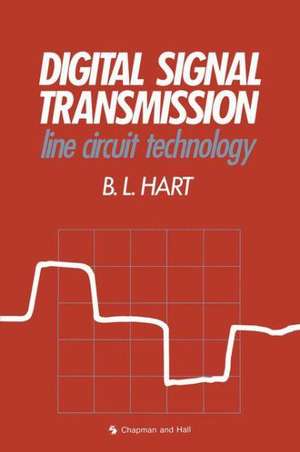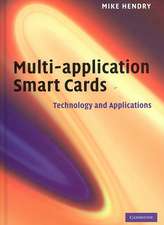Digital Signal Transmission: Line Circuit Technology
Autor Bryan Harten Limba Engleză Paperback – 31 oct 1987
Preț: 380.25 lei
Nou
Puncte Express: 570
Preț estimativ în valută:
72.77€ • 75.18$ • 60.56£
72.77€ • 75.18$ • 60.56£
Carte tipărită la comandă
Livrare economică 25 martie-08 aprilie
Preluare comenzi: 021 569.72.76
Specificații
ISBN-13: 9780412382208
ISBN-10: 0412382202
Pagini: 146
Ilustrații: X, 146 p.
Dimensiuni: 155 x 235 x 9 mm
Greutate: 0.23 kg
Ediția:1988
Editura: Springer Us
Colecția Springer
Locul publicării:New York, NY, United States
ISBN-10: 0412382202
Pagini: 146
Ilustrații: X, 146 p.
Dimensiuni: 155 x 235 x 9 mm
Greutate: 0.23 kg
Ediția:1988
Editura: Springer Us
Colecția Springer
Locul publicării:New York, NY, United States
Public țintă
ResearchCuprins
1 Lumped and distributed circuits.- 2 Characteristics of ideal transmission lines/cables.- 2.1 Equations for an ideal line.- 2.2 Possibility of line pulse reflections.- 2.3 Matching and mismatching.- 2.4 ‘Phantom generator’ interpretation of reflections.- 3 The reflection chart.- 3.1 The Reflection Chart: step-input voltage.- 3.2 Rectangular pulse drive.- 3.3 Input waveforms with finite rise- and fall-times.- 4’ sliding-Load-Line’ analysis of pulses on lines.- 4.1 Resistive terminations.- 4.2 Nonlinear load: a diode termination.- 4.3 Reflections with logic circuit interconnections.- 5 Time domain reflectometry.- 5.1 Application examples: step and truncated-ramp drive.- 6 Crosstalk.- 6.1 Crosstalk with strip lines.- 6.2 Crosstalk with cable bundles: general comments.- 7 Logic signal transmission: an introduction.- 7.1 Transmission characteristics.- 7.2 Noise rejection in unbalanced and balanced systems.- 7.3 Single-ended, point-to-point transmission: RS232C.- 7.4 Multi-point bidirectional data transmission: RS485.- Appendix A: Résumé of practical line characteristics.- Appendix B: Laboratory demonstration work.- General considerations.- Circuit descriptions and observed waveforms.- Appendix C: General notes on waveform observation.- Lumped systems.- Distributed systems.- Answers (including worked solutions to problems).- References.












